Christina Tsangouri
A Recursive Framework for Expression Recognition: From Web Images to Deep Models to Game Dataset
Aug 04, 2016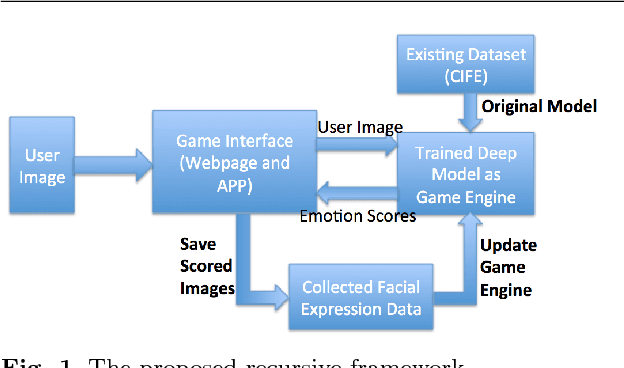
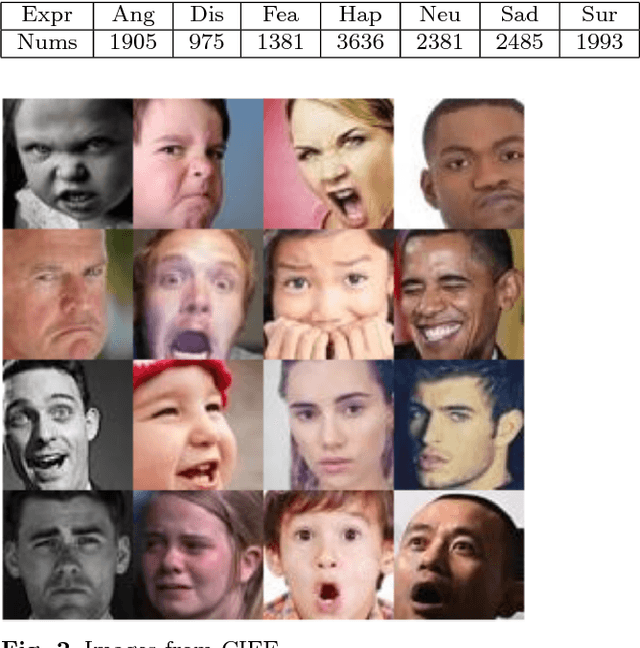

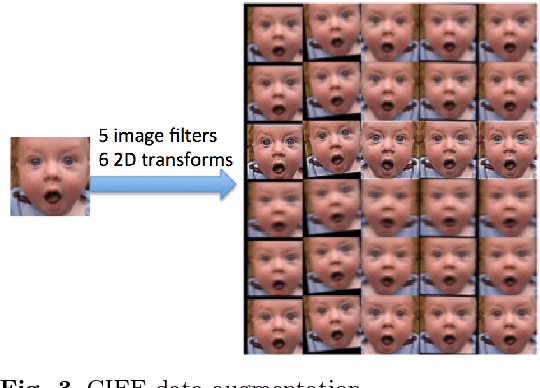
Abstract:In this paper, we propose a recursive framework to recognize facial expressions from images in real scenes. Unlike traditional approaches that typically focus on developing and refining algorithms for improving recognition performance on an existing dataset, we integrate three important components in a recursive manner: facial dataset generation, facial expression recognition model building, and interactive interfaces for testing and new data collection. To start with, we first create a candid-images-for-facial-expression (CIFE) dataset. We then apply a convolutional neural network (CNN) to CIFE and build a CNN model for web image expression classification. In order to increase the expression recognition accuracy, we also fine-tune the CNN model and thus obtain a better CNN facial expression recognition model. Based on the fine-tuned CNN model, we design a facial expression game engine and collect a new and more balanced dataset, GaMo. The images of this dataset are collected from the different expressions our game users make when playing the game. Finally, we evaluate the GaMo and CIFE datasets and show that our recursive framework can help build a better facial expression model for dealing with real scene facial expression tasks.
Towards an "In-the-Wild" Emotion Dataset Using a Game-based Framework
Jul 10, 2016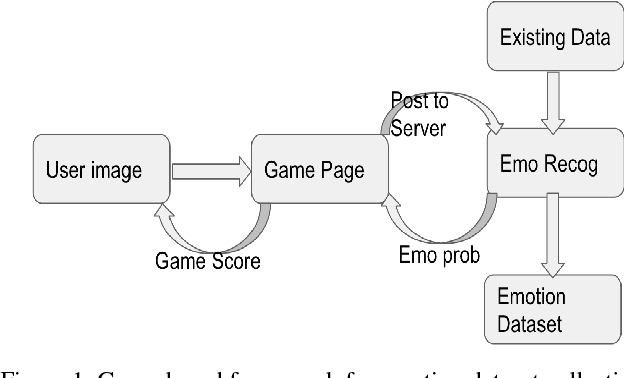
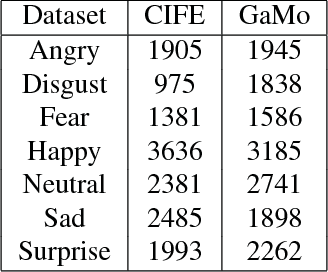
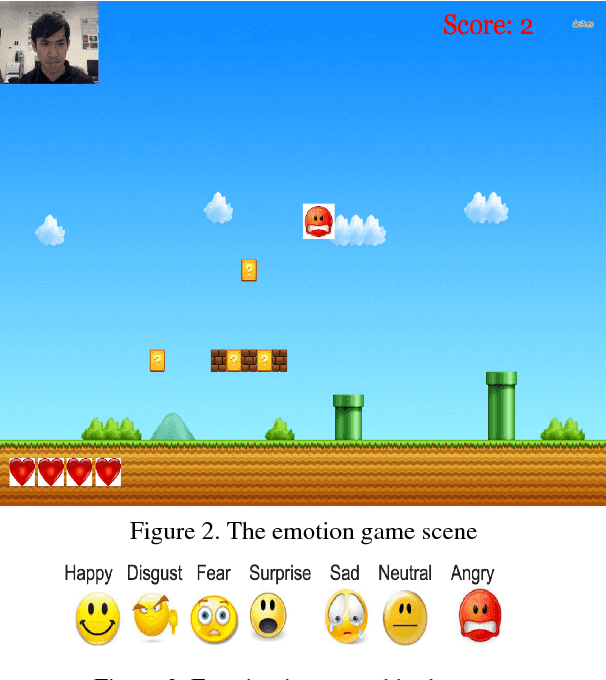

Abstract:In order to create an "in-the-wild" dataset of facial emotions with large number of balanced samples, this paper proposes a game-based data collection framework. The framework mainly include three components: a game engine, a game interface, and a data collection and evaluation module. We use a deep learning approach to build an emotion classifier as the game engine. Then a emotion web game to allow gamers to enjoy the games, while the data collection module obtains automatically-labelled emotion images. Using our game, we have collected more than 15,000 images within a month of the test run and built an emotion dataset "GaMo". To evaluate the dataset, we compared the performance of two deep learning models trained on both GaMo and CIFE. The results of our experiments show that because of being large and balanced, GaMo can be used to build a more robust emotion detector than the emotion detector trained on CIFE, which was used in the game engine to collect the face images.
 Add to Chrome
Add to Chrome Add to Firefox
Add to Firefox Add to Edge
Add to Edge